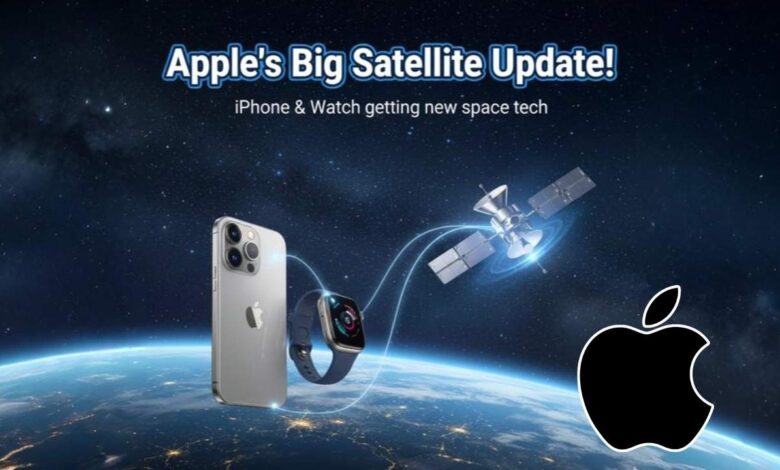Apple Expands Satellite Features for iPhone & Apple Watch — What to Expect
Apple is expanding satellite features for iPhone and Apple Watch with new APIs, improved messaging, offline Maps and 5G NTN support. Learn what features are coming and how Globalstar, SpaceX and carriers fit into the plan

Apple is getting ready for a big expansion of satellite features on its iPhone and Apple Watch devices. According to a new report by Bloomberg’s Mark Gurman, the company is working on new software tools, better messaging options, and hardware upgrades. This is all part of Apple’s big plan to make iPhones and Watches work better even when no network is around.

Apple’s Long Journey with Satellite Tech
Apple actually started working on satellite ideas almost 10 years ago, after hiring two top engineers from Google’s parent company, Alphabet. At that time, they wanted to make iPhones connect directly with satellites, but that idea didn’t work well back then because the tech was not ready.
So, Apple changed the plan and took small steps instead. That’s how the Emergency SOS via Satellite feature was born — first introduced with iPhone 14 in 2022.
Gradual Expansion of Satellite Services
Since the first launch, Apple slowly added more features. In 2023, it added Roadside Assistance via AAA, and now it’s even offering two-way text messaging when there’s no cellular network.
All this work is done by Apple’s special team called the Satellite Connectivity Group (SCG), led by Mike Trela. This team includes experts from wireless software, hardware, and global business.
Who Powers Apple’s Satellites
Right now, Apple uses Globalstar’s satellite network for these features. This network also supports Apple Watch Ultra 3. Apple is also thinking about giving future iPads satellite connection, but that idea is still in early talks.
Meanwhile, other tech companies are also moving fast in the satellite race. SpaceX’s Starlink is teaming up with T-Mobile for satellite-to-phone features, and Verizon and AT&T are planning similar things.
Internal Talks and Industry Challenges
Inside Apple, there are discussions about how much they should really depend on satellite tech. Some senior members think Apple shouldn’t go too deep because it’s usually a telecom thing. But others say satellite is the future, and Apple should stay in control of the experience, privacy, and design.
There are also business changes happening — Globalstar might even be sold, and SpaceX could be a buyer, which might affect Apple’s future plans too.
Upcoming Satellite Features Apple is Working On
Here’s what Apple is developing right now for upcoming iPhones and Watches:
- Satellite API for apps: Apple will allow other app developers to use satellite connections in their apps.
- Apple Maps with satellite navigation: So users can get directions even without internet or signal.
- Photo messaging through satellite: Apple is testing how to send photos via satellite, not just text.
- Better auto-connection: Apple wants users to stay connected to satellite automatically without pointing phone to sky.
- 5G NTN support: The next iPhones might support 5G Non-Terrestrial Networks, which means more powerful coverage through satellites.
Business Model and Upgrades
Many of these features will depend on upgrades to Globalstar’s satellites, which Apple is helping fund. If SpaceX buys Globalstar, the updates might come even faster — but Apple may need to rethink how it offers these services.
For now, Emergency SOS is still free, but Apple might charge for premium satellite plans in the future, maybe through carriers or satellite partners like SpaceX.
Apple is not planning satellite-based phone calls, FaceTime, or full internet browsing yet — but those things might come later as tech improves.
Also Read :- Jio Youth Offer 2025: Get 18 Months Free Google Gemini AI Pro Subscription



